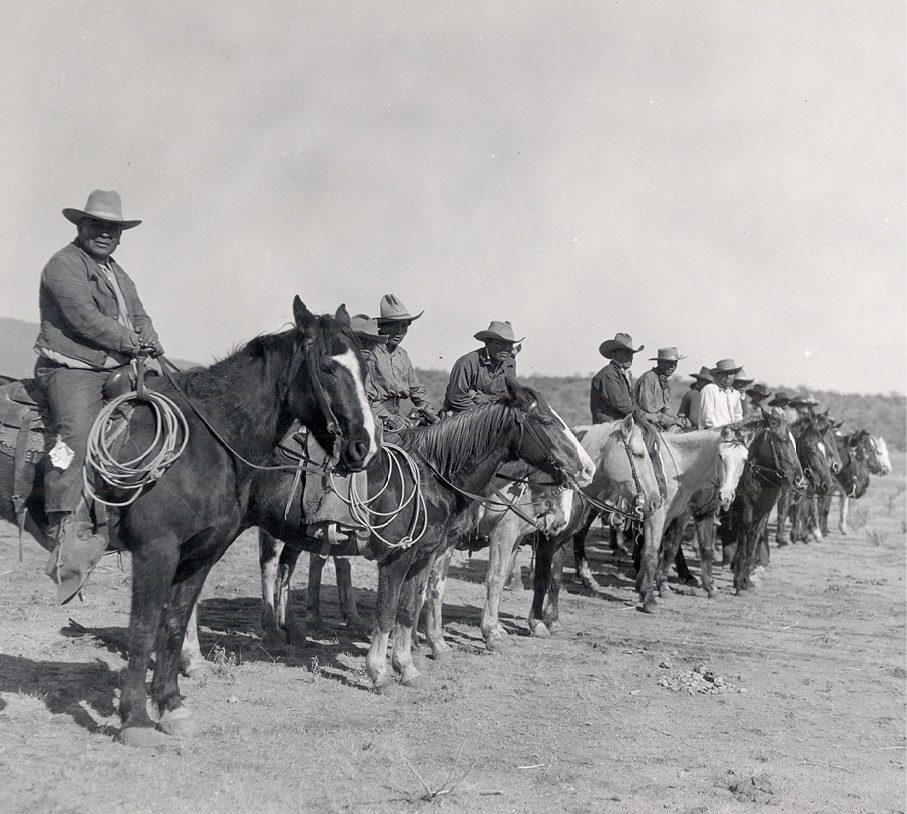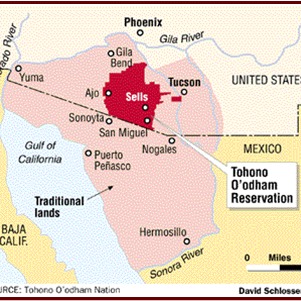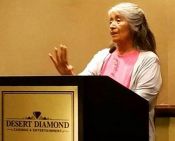O'0dham People
"The natives of these ... new nations [O'odham Nation] are industrious Indians, who are docile, affable, and very friendly, and at the same time warlike and valiant, able to defend themselves against their enemies …" Father Eusebio Francisco Kino, S.J. "Favores Celestiales" Book IV Chapter V 1696
The Valiant Desert Sharing People
Today the 50,000 O'odham People live in the cities or towns of Arizona or in the four areas set aside by the United States government. Not recognized by the governments of the United States and Mexico are.the Hia-C'ed O'odham who live throughout southwestern Arizona and the few remaining O'odham families who live in northwestern Sonora. The O'odham People are united by a common heritage and their powerful and poetic language.
Official O'odham Community Websites
Tohono O'odham Nation
Click http://www.tonation-nsn.gov/
Gila River Indian Community
Click http://www.gilariver.org/
Ak-Chin Indian Community
Click http://www.ak-chin.nsn.us/index.php
Salt River Pima-Maricopa Indian Community
Click http://www.srpmic-nsn.gov/
San Xavier District of the Tohono O'odham Nation
Click https://www.waknet.org/
Himdag Ki
Tohono O'odham Nation Cultural Center and Museum
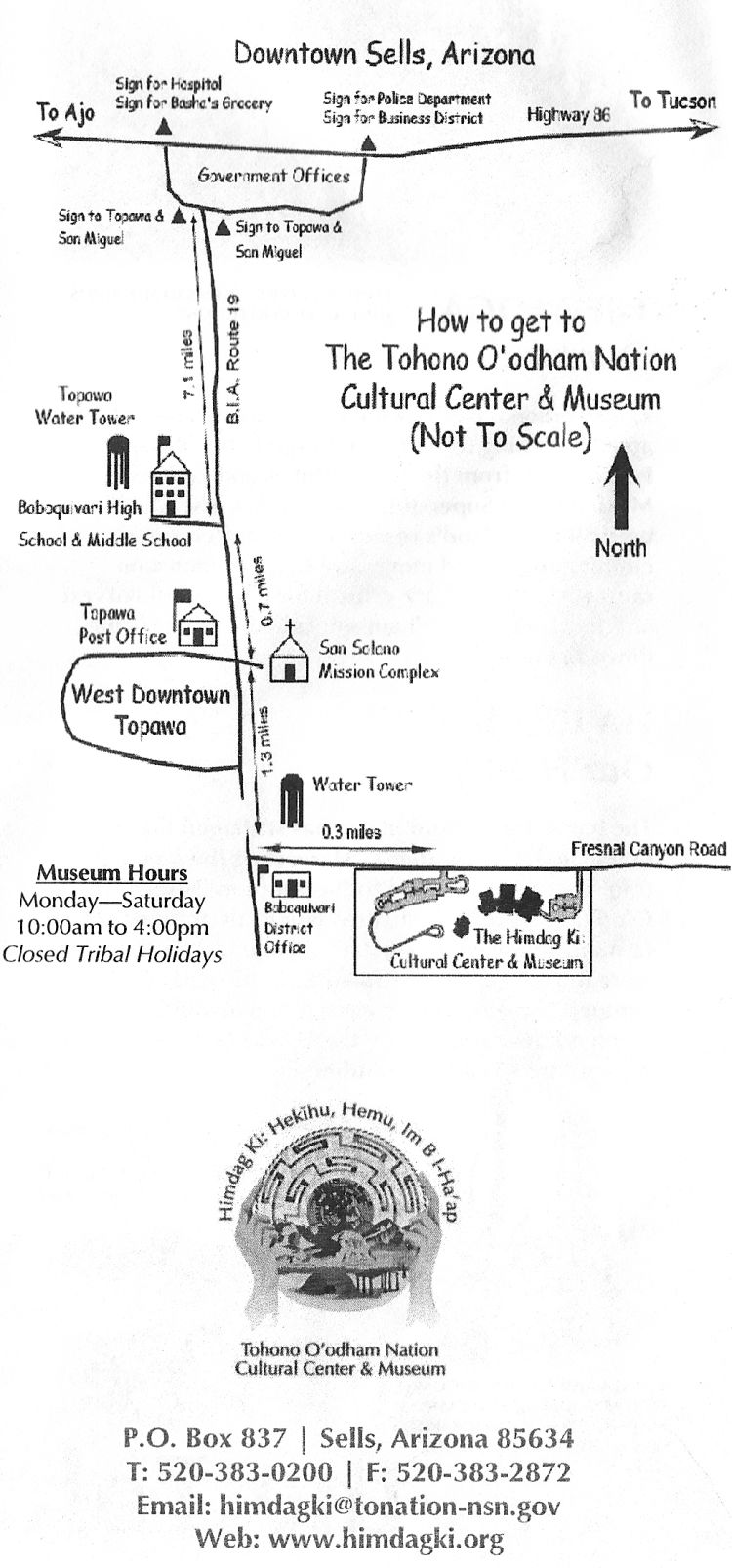
http://www.himdagki.org/
Himdag Ki Map
O'odham Literature
"Language was perhaps the O'odham's highest form of art. Speeches, ritual oratory, and song lyrics were powerful and poetic. Moreover the grammar of the language is as subtle and complex as any in the world; its vocabulary is rich in words defining the external and internal world of the O'odham."
Dr. Bernard L. Fontana
"Papago [O'odham] Literature"
Ofelia Zepeda and Danny Lopez
Editorial Consultants
"The South Corner of Time"
Examples of O'odham songs, stories and poetry, past and present,
together with bibliography.
For entire work, click
http://web.archive.org/web/20170524193102/http://parentseyes.arizona.edu/southcorner/toh_ocean.html
Beautiful Traditional O'odham Songs
San Xavier Traditional Singers
Ivan Burrell and Antoinette Encinas
Videos of the performance of beautiful traditional O'odham songs set in Mission San Xavier del Bac.
Maisad Tholnig
The Creator Song
Minutes: 7.10
Click
https://www.youtube.com/watch?v=rvvwRFUjX2s
Tohono O'odham Wo' Po
Running Song
Minutes: 4:57
Click
https://www.youtube.com/watch?v=-zQs4NaJg8A&gl=US&hl=en
O’odham Dances
Ofelia Zepeda
Poetry Video
Ofelia Zepeda reads her video poem about the tradition of the O’odham people joining with the rest of the universe in singing for the summer rain that sustains all. The O'odham sing with the animals, saguaros and other plants of the desert together with the sky, wind and mountains to bring the rain down from the clouds. The video poem presents the stark and beautiful transformations of the Sonoran Desert during the summer season from sunset and the reviving coolness of starry nights to sunrise and the intense heat of day.
O'odham and English
Minutes: 4:45
For O'odham Dances poetry reading video, click
https://vimeo.com/198077138
O'odham History
"Sharing the Desert: The Tohono O'odham in History"
Winston P. Erickson
The writing of the O'odham history was a collaboration between the Tohono O'ooham Nation's Education Department and the University of Utah's American West Center. The book was published in paperback by the University of Arizona Press in 2003.
To preview parts of the book, click
https://books.google.com/books?id=2DNYFKAsx_AC&printsec=frontcover&source=gbs_atb#v=onepage&q&f=false
"Peoples of the Middle Gila:
A Documentary History of the Pimas and Maricopas 1500s-1945"
John P. Wilson
This history of the Akimel O’odham and Pee Posh peoples who live along the middle Gila River is part of the Gila River Indian Community Anthropological Research Papers. The book was published in paperback by the University of Arizona Press in 2014.
To view book online, click
https://bajaarizonahistory.org/wp-content/uploads/2019/05/wilson-peoples-of-the-middle-gila-text.pdf
Annotated Bibliography of the Tohono O'odham
"An Annotated Bibliography of the Tohono O'odham (Papago Indians)"
Dr. Bernard L. Fontana and Michael U. Owens 2004
Click
http://www.oldpueblo.org/wp-content/uploads/2018/03/Tohono-Oodham-bibliography-Bunny-Fontana-final.pdf
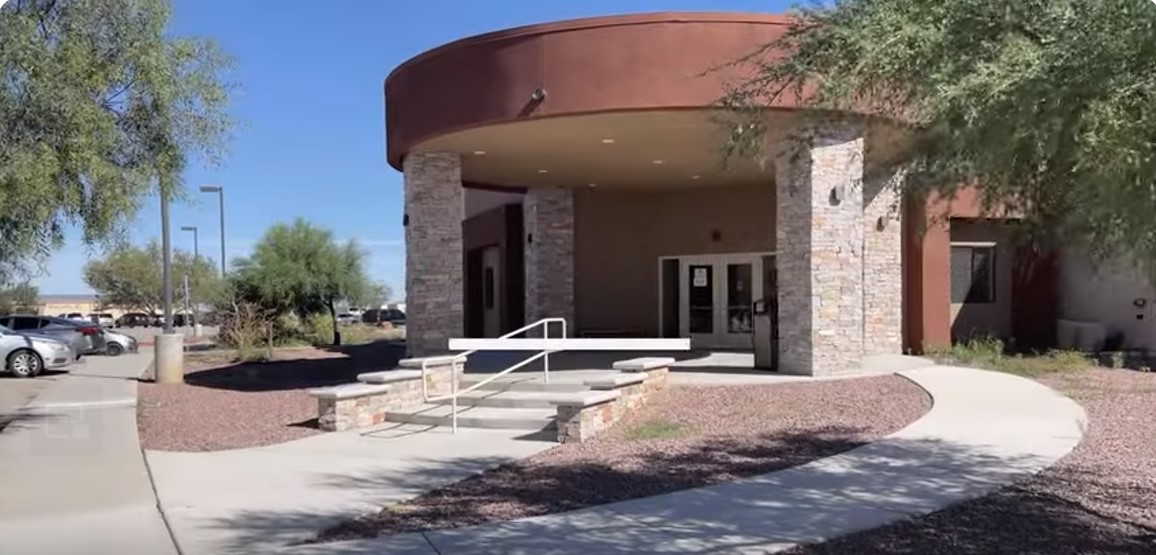
Tohono O’odham Community College
Tohono O’odham Community College
The Tohono O’odham Community College (TOCC) is a public tribal land grant college. The TOCC with its main campus near Sells, Arizona, and 3 satellite campuses including one in Phoenix and its nationwide online courses serves 900 students representing 52 Native nations.
Free tuition is provided for all Native American students living in the United States who can provide proof of tribal enrollment. Other students desiring to pursue higher education are welcome to attend with the payment of tuition. For all students attending TOCC, both Native American and non-Native American, text books and other college fees are free - paid for by governmental grants.
The Tohono O’odham Community College truly lives up to its motto: “Ñia, oya g t-taccui am hab e-ju” ("Our Dream Fulfilled). More about TOCC at https://tocc.edu/.
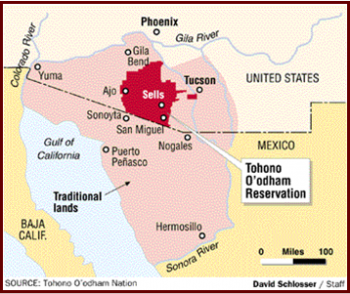
Traditional Homeland Map
The O'odham People
Raising Hell as Well as Wheat - Papago Indians Burying the Borderline
Gary Paul Nabhan
Isidro Saraficio is sitting in a dry irrigation ditch, under the shade of a Mexican elderberry tree, gazing out over a wheatfield wavering in the noonday heat. It's a fine stand of wheat for a desert field grown with just the rain that ran down the arroyos this winter. Isidro diverts floodwaters from a holding pond to the field through hand-dug ditches, letting gravity rather than machines do the work. Now that the grain is ripe, his friends have come to the rancheria to help with the harvest. ….
The quiet of noon is suddenly ruptured. Like a giant raptor, a Border Patrol plane breaks into sight and roars down across the land a few hundred feet over the field, causing quail and doves to flush out of the wheat. The patrolling plane zips westward, straight above the fence line and firebreak that stretches as a scar all the way to the far horizon. Sitting up as if awakening from a bad dream, Isidro's friends realize that the nightmare sound they heard is part of his everyday world. The field lies within a mile of the U.S./Mexico border.
Isidro planted the wheat not only for pinole and popovers, but also as a political protest. He was born here on the ranch in Sonora, Mexico, when the elderberry above him first came into bloom thirty-four years ago. Yet his family has never had a deed to this place, which they have probably farmed for hundreds of years. Isidro has planted wheat on land that another man "legally" owns. The field has been worked to show that the homestead has not been deserted. …
In short, Isidro is raising hell as well as wheat. He is raising his sickle to question the existence of a boundary that his people have never acknowledged.
Isidro is a Papago Indian, sharing this borderland dilemma with 10,000-15,000 of his people who refer to themselves as the Tohono O'odham. …. In 1853, a political decision made thousands of miles away divided the Papago country between the United States and Mexico.
Gary Paul Nabhan
The Desert Smells Like Rain: A Naturalist in O'odham Country
Chapter 2
Raising Hell as Well as Wheat: Papago Indians Burying the Borderline 1982
